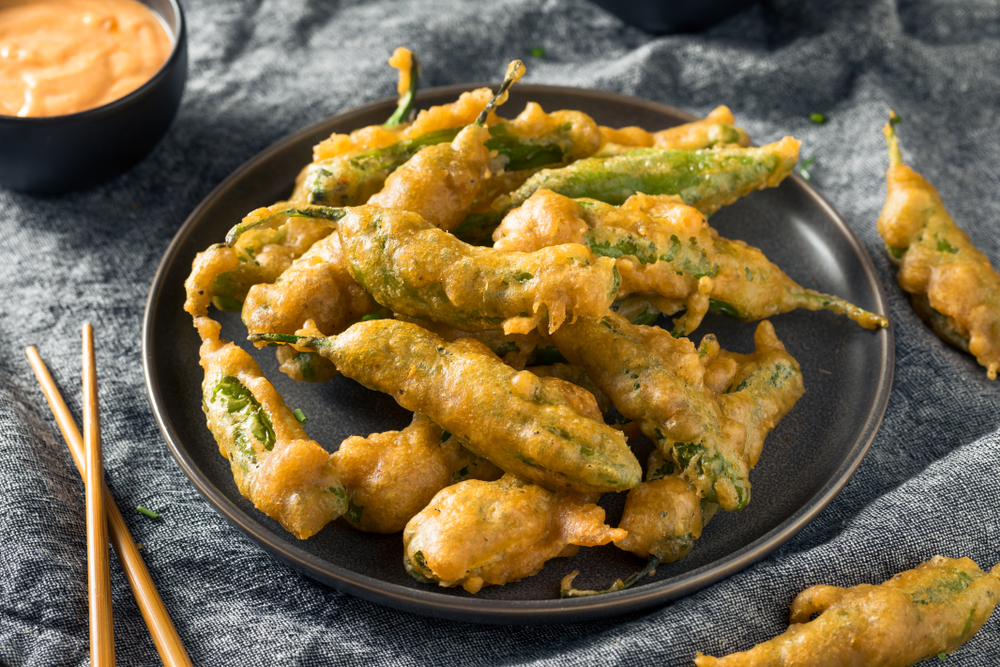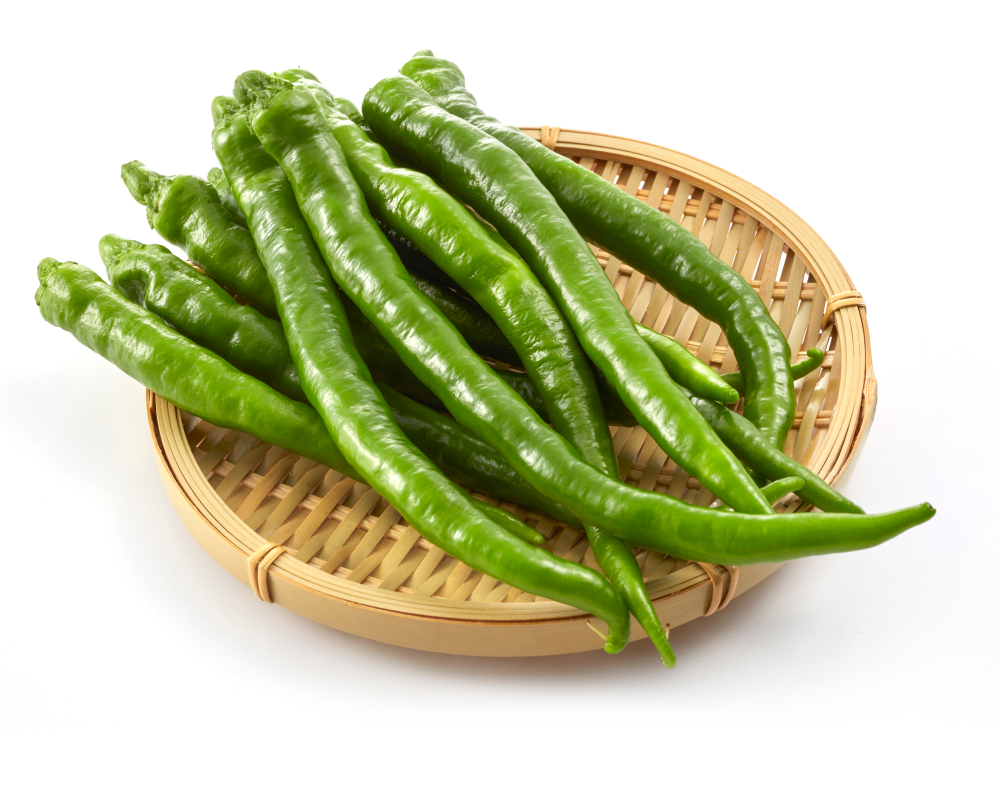A Fushimi pepper (Capsicum annuum) is a Japanese green pepper with zero heat. It’s an excellent addition to salads, sandwiches, and fried, stir-fried, grilled, or sautéed food.
What Are Fushimi Peppers?
Fushimi peppers (also called Fushimi togarashi) are sweet peppers originating from Kyoto, Japan.
These peppers are classified as Kyoyasai, which means heirloom Kyoto region vegetables. The Kyoyasai labeled vegetables are considered high-end, as they are rich in vitamins and minerals, typically more so than other vegetables.
Fushimis are characterized by their bright green color, thin walls, wrinkly surface, and pointy ends. These Japanese peppers’ shape is similar to the cayenne pepper. Their flavor profile is sweet and fruity. They grow to around 5.5-6” (14 to 16 cm) long.
Are Fushimi Peppers Spicy?
The heat level of Fushimis is zero (0) SHUs, like sweet bell peppers. They are not spicy, hot peppers like jalapenos (2,000-8,000 SHUs).
What’s The Difference Between Fushimi Peppers And Shishito Peppers?
The main difference is that Shishito peppers are mildly spicy peppers with 50-200 SHUs. Although Shishitos can be sweet, approximately one in 10 of them has some heat. However, there is no burning sensation even when they are hot.
Like Fushimis, Shishitos are green and have an elongated shape but are a bit thicker than Fushimis. They can also vary in color and be a darker green. Moreover, Shishitos are smaller than Fushimis, ranging from 2-4” (5 to 10 cm) in length.
Unlike Fushimis, Shishitos are not sweet. Instead, they are fresher, peppery, citrusy, and somewhat grassy.
How To Use Fushimi Peppers
Fushimi sweet peppers are popular in Asian cuisine and are delicious as tempura. They are often eaten raw as well because they have no heat. You can add them fresh to salads or sandwiches. They also taste great when:
- Fried
- Stir-fried
- Grilled
- Pickled
- Sautéed
- Simmered

Where To Buy Fushimi Peppers
Fushimis are common throughout Asia, but they are not as easy to find in the US and other parts of the world.
Check your local Asian specialty stores and farmers’ markets in the summer.
Fushimi Pepper Substitutes
There are plenty of alternatives to Fushimi peppers. Depending on what you’re looking for in terms of heat and taste, some of those are:
- Bell peppers. All varieties have zero heat and can be eaten raw, but their flavor profiles differ. Red bell peppers are sweet with a citrusy undertone. Yellow and orange bell peppers have no heat and some sweetness, but are less sweet and citrusy than reds. On the other hand, green ones aren’t sweet at all, but rather grassy and sometimes bitter.
- Habanada peppers. The heatless habaneros are sweet, tropical, and tangy with earthy undertones.
- Banana peppers. These can have 0-500 SHUs, so you may get a sweet or mildly tangy pepper. They’re not on the spicy side, so you don’t need to worry about the heat. They taste fantastic when pickled.
- Friggitellos (pepperoncinis). The chilies only have 100-500 SHUs and a sweet and peppery flavor profile. Although they can be eaten raw, they’re best pickled, as pickling enhances their deliciousness the most.
- Beaver dam peppers. Beaver dams have 500-1,000 SHUs and are characterized by a faint sweetness.
- Anaheim peppers. With 500-2,500 SHUs, those are very mild and taste sweet, smoky, and tangy. It’s worth noting that they are rich in vitamins, like Fushimis.
- Padron peppers. They also have 500-2,500 SHUs and are packed with vitamins and minerals. Their flavor profile is sweet and piquant with smoky and tangy undertones.
- Shishito peppers. While they have 20-200 SHUs, shishito peppers have a similar flavor profile and can be used almost interchangeably in Asian dishes.
Can You Grow Fushimi Peppers?
Fushimi peppers have a high germination rate, so you can grow them from seeds at home, even if you’re a beginner chili pepper grower.
You can order seeds online or may be able to find seedlings at your local garden center or nursery.
Here’s how to grow Fushimi peppers at home:
- Sow seeds indoors in small plastic pots filled with well-drained soil six weeks before the last frost.
- The ideal soil temperature for germination is 75 to 90 degrees Fahrenheit (about 24 to 32.2 degrees Celsius). Remember to keep the soil moist but not too wet. Sprouts are ready to be transplanted when they get a few sets of true leaves.
- If you want the peppers in an inside container garden, plant them in bigger pots and keep them in an area with full sun exposure. The proper pepper plant spacing for outside planting is 24 to 40 inches (about 60 to 100cm). The ideal planting time is late spring, whenever the soil temperature reaches at least 60 degrees Fahrenheit (15 and a half degrees Celsius) in your area.
Fushimi seeds take about 80 days to mature, and the plants have a high production yield.

